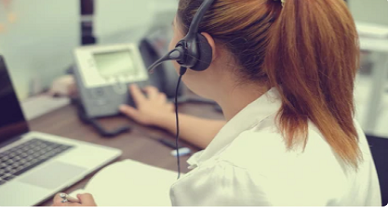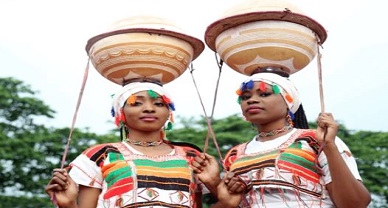Legality of Recording Phone Calls in India & Admissibility of Such Evidence Before the Court
Introduction
Nowadays, most of the interaction between individuals takes place through phone calls, and physical interaction between individuals has become a rarity. Even business transactions take place through mobile calls, and thus, people have a tendency to record those calls to keep proof of the conversation so that the other person doesn’t back off from their statement. Such call recordings may act as a means of coercion as well as to threaten another individual to take him/her to court on the basis of a recording. The question of intruding into privacy arises when someone eavesdrops on the conversation of participants of the call. However, the government is allowed to do that for public safety, but that too within the bounds of law. There is hardly any confusion about the permissibility of recording calls by the government.But,the legal debate surrounding recording calls becomes interesting when we delve into the question of the permissibility of such practice by a non-governmental third party or even the participant in the call. Due to the paucity of laws regulating the practice by the latter parties, the paper aims to find answers in foreign jurisprudence. Furthermore, the admissibility of such evidence and its probative value have also been addressed in the later sections of the paper. By the end of the paper, the predominant objective of the author would be discernible, and that is, an attempt to fill the current vacuum of law and suggest a reformation of laws to cope well with the developing technology.
Phone Tapping by Government in India & Limitations on Its Permissibility
The only instance in which the government can listen in on a phone call between two people is when there is a public emergency or when it is necessary for the safety of the public.[1] Of course, tapping a person’s phone constitutes a serious invasion of their privacy and violates Articles 19 and 21 of the Constitution.[2] Section 5(2) of the Indian Telegraph Act 1885,[3] outlines the circumstances under which the government may conduct phone tapping. Rule 419 A of the Indian Telegraph Rules, 1951[4] also establishes the acceptable standards for phone tapping.
[Image Sources: Shutterstock]
The right to privacy is recognized as a fundamental right that is protected by Article 21 of the Constitution, and there is a direct correlation between phone tapping and privacy violations. PUCL v. UoI[5] is a seminal case in this respect, in which the petitioners filed a PIL concerning the government’s invasion of privacy through phone tapping, which is tantamount to a violation of Article 21. Section 5(2) of the Indian Telegraph Act was found to be tenable by the court, who also deemed the provision to be in accordance with fundamental rights because it would fall within the exceptional realm of reasonable restrictions of Article 19 and the procedure established by law under Article 21.
With the ruling in KS Putta swamy & Anr. v. Union of India & Ors.,[6] the right to privacy gained importance and was declared a fundamental right protected by Article 21. Without highlighting the significant aspects of Puttaswamy’s ruling regarding the right to privacy, the conversation about phone tapping—which is closely related to that right—would fall short. In this instance, the court held that the Constitution did not inherently grant the right to life and individual liberty. Instead, each and every human being is born with these rights, which are intrinsic to them. A person’s right to privacy is essential to their sense of dignity. It upholds personal autonomy and acknowledges the capacity of the individual to manage essential facets of their existence. Privacy depends on individual decisions dictating a way of life.
Recording of Calls by a Non-Governmental Third Party to the Telephonic Conversation
Section 25 of the Indian Telegraph Act 1885[7]is a penal provision that prescribes a punishment, which includes punishment that may extend to three years, or fine, or both for the interception of telephone lines. This section applies to ‘any person,’ which implies that recording calls by any third party are illegal in India except for the government under stipulated circumstances. This provision is premised on the right to privacy only. Therefore, the argument that the right to privacy is only available against the state should be discarded on two grounds. Firstly, when the statutory provision penalizes an action, the question of the application of fundamental rights is unnecessary. Secondly, on the basis of Kaushal Kishor v. State of UP case,[8] Article 19 and Article 21 are horizontally applicable against non-state actors.
Since phone conversations have become an integral part of modern man’s life, the court concluded in Rayala M. Bhuvaneswari v. Nagaphanender Rayala, 2007[9] that the right to have an uninterrupted telephone conversation could be asserted as a “right to privacy”. On the phone, discussions are frequently private and personal. The court ruled that it was unlawful for the husband of the plaintiff to record his wife’s phone conversations with third parties, and they declined to accept the evidence.
In Australia, section 7 of the Telecommunications (Interception and Access) Act 1979[10] prohibits interception of a phone call. There are obviously some exceptions to the rule enshrined in the Act as well, similar to the Indian Telegraph Act 1885. One distinguishing feature of both laws is that Australian law emphasizes more on the element of consent than the Indian law.
Recording Calls without the Consent of the Participant: Legality in India & Outside India
According to the compilation of Ralph Thomas’s “Covertly Recording Telephone Conversation,”[11] the Federal Law of the USA makes it lawful to record a conversation without the consent of the other participant in “one-party consent states.” However, there are 12 “two-party consent states,” wherein the consent of all participants is strictly required to record the calls. If you are a non-participant and still you record the call without the consent of one of the participants in a “one-party consent state” and of all the participants of the call in a “two-party consent state,” then it is considered illegal eavesdropping or phone tapping.This was the federal law; the Supreme Court has taken a different stance on it. In Rathbun v. US,[12] the Supreme Court held that a party can’t impose secrecy or confidentiality just by having a conversation on the telephone. And therefore, a participant in a call is entitled to record a communication and may use it for his own benefit or for any other purpose.
In the UK, the Regulation of Investigatory Powers Act 2000[13]does not prohibit the recording of calls per se without making another party aware of it as long as it is kept for the personal use of the participant who has recorded it. If the recorded call is shared with some other person without consent, then the act becomes illegal in nature. It is the position of law in many other jurisdictions, like Denmark, Finland, New Zealand, etc.
In India, the participants are not inhibited from recording their own calls without the consent of others by law. However, a legal suit can be filed by the party to the conversation if it feels that the call recording has breached their right to privacy. In Sanjay Pandey v. Directorate of Enforcement,[14]Delhi HC has set a strong precedent by ruling the act of recording calls without the consent of the other party as a violation of the right to privacy. In Aasha Lata v. Durgesh Soni,[15]Chhatisgarh HC also decided the case on similar lines. Madhya Pradesh HC also gets an occasion to decide the evidentiary value of recorded calls obtained without consent in Arunima Alias Abha Mehta v. Sunil Mehta.,[16] such evidence was called to be in breach of privacy, and the court rejected to admit such evidence and also imposed a penalty under Section 72 of IT Act 2000.[17]
Admissibility of Call Recordings as Evidence before the Court
An “electronic record” is defined as anything that is stored, received, or sent in an electronic format by Section 2(1)(t) of the Information Technology Act 2000.[18] Without a doubt, call recordings are included in this category of electronic records. As per Section 3 of The Indian Evidence Act of 1872,[19] these electronic records are treated as documentary evidence. Additionally, these materials are admissible in court under section 65 B.[20]
It is important to note that the question of legality and admissibility of evidence is completely different,and even if the evidence is illegally obtained, that does not preclude the court from admitting such evidence as long as it is relevant to the case.The first instance was when the issue of call recording as evidence was brought before the court in S. Pratap Singh v. State of Punjab 1964.[21]The court admitted the evidence only because it helped in the resolution of the case.Section 65B of IEA was brought in 2000, and it was not actually admitted as electronic evidence.In R v. Maqsud Ali,[22] the court appreciated the new kind of evidence that was brought before it due to the advancement in technology and readily accepted the advantages gained by new technology,provided the concerns of tampering with the recording are eradicated to support the accuracy of the recording and that the voice recorded is identifiable.[23]The evidence must be admitted with extreme caution, the court said, without outlining a comprehensive set of guidelines for doing so. In N. Sri Rama Reddy v. V.V. Giri,[24] this ratio was further upheld. A later ruling by the court established the parameters for tape-recorded conversation admissibility in RM Malkani v. State of Maharashtra 1973.[25] Three criteria were outlined by the court:
- The conversation is relevant to the issue
- A voice is identifiable
- Removing the option to erase the tape recording demonstrates the accuracy of the conversation.[26]
Section 8 of the Evidence Act[27] permits the admission of a contemporaneous tape record of a pertinent conversation as a relevant fact. They are res gestae. According to Section 7 of the Evidence Act,[28] the tape record was deemed by the court to be similar to a photograph of a relevantincident.[29]These tape-recorded evidences are taken as mere corroborative evidence by the Indian Courts.
Probative Value of ‘Admission’made through Call Recording
The Indian Evidence Act, 1872, defines admission as a statement, either oral or written, or included in an electronic format, that implies any fact relevant to the matter at hand or raises any doubts about it.[30] It can be made by any of the individuals listed in sections 18–23,[31] with the conditions specified. It is important to clarify that when we are talking about “admission,” that should not be confused with the discussion we had regarding admissibility in the previous section.
Suppose A had a conversation with B on a call, wherein he admitted something relevant to the case. B recorded that telephonic conversation and produced it before the court as electronic evidence. B recorded that telephonic conversation without the consent of A. It is clear that such evidence is admissible. But, what value does the court attach to such evidence is essentially the issue to be addressed in this section.
Admission is the strongest evidence against the maker, the Supreme Court ruled in Income Tax Officer v. Mangat Ram Norata Ram (2011).[32] and it is implied by the party’s actions. As long as a party acknowledges his prior statement, it becomes a substantial proof of evidence of the facts admitted therein for the purposes of sections 17 and 21. Assessing the significance of a statement like this is a distinct issue.[33] A fact’s admission does not prove it beyond a reasonable doubt. In order for a court to reach this conclusion, it must be able to discern from clear admissions that either the truthfulness or dependability of the admission can be assessed in conjunction with other documentation in the case file, or the admission itself must be unambiguous.[34] Furthermore, for an admission to release the opposing party from the burden of proving the fact that is purported to have been admitted, it must be unambiguous and clear.[35]
While determining the probative value of admissions, often, we forget to take into account the distinction between formal and informal admissions. Section 58 requires formal admissions to be made in order to proceed with a trial.[36] On the other hand, informal admissions are made outside of court and typically occur when the parties involved are unaware that they will be used as admission in any legal proceedings. Even if they are not conclusive, such admissions change the burden of proof. These informal admissions are admissible before the court under 17-23 of IEA.[37]
Therefore, when we talk about the weight attached to the admission made through telephones and such statements are produced before the court as call recordings, it would be relatively very low as compared to other kinds of admissions. Firstly, it is electronic evidence which can be easily tampered with. Secondly, these admissions are informal admissions that are made outside the court and, thus, not conclusive in nature.
Conclusion
Recording phones is very commonplace, and everyone keeps these recordings so that they would always have proof of the conversation that happened between two individuals, and no one would be able to deny those talks subsequently. Most of the time, when one person records a call, the other person is not notified, and the other participant is unaware of the fact that whatever he/she is saying is recorded and can be used against him/her in court. In India, consent is not a material factor in admitting such evidence before the court. Also, people usually don’t claim a breach of their privacy for being recorded without consent by another participant in the call. However, it could be argued before the court. But the court will be reluctant to accept it until and unless the recorded call is maliciously used for the detriment of the person whose statement made on a call is brought before the court. On this front, we genuinely need a reform in the laws so as to safeguard the privacy of individuals. No one expects that every statement that he/she makes on the phone can make them legally liable. It is also difficult to gauge the exact context in which a statement is made on a phone call. Therefore, consent must be made a relevant factor, and a notification must be sent to a person being recorded on a call invariably so that he /she gets a fair opportunity to decide to either stay on the call or leave it.
Author: Kartavya Rajput, in case of any queries please contact/write back to us at support@ipandlegalfilings.com or IP & Legal Filing
[1]The Indian Telegraph Act, § 5(1).
[2]The Constitution of India, Art. 19; Art. 21.
[3]The Indian Telegraph Act, § 5(2).
[4] The Indian Telegraph Rules, Rule 419A.
[5]People’s Union for Civil Liberties v. Union of India, (2011) 14 SCC 561.
[6]K.S. Puttaswamy v. Union of India, (2018) 1 SCC 809.
[7]The Indian Telegraph Act, 1885, §25.
[8]Kaushal Kishor v. State of U.P., (2018) 11 SCC 561.
[9]Rayala M. Bhuvaneswari v. Nagaphanender Rayala, 2007 SCC OnLine AP 892, ¶ 13.
[10]The Telecommunications (Interception and Access) Act (Aus) 1979, § 7.
[11]Ralph Thomas, Covertly Recorded Telephone Conversation, https://www.pimall.com/nais/n.tel.tape.law.html.
[12]Rathbun v.United States, 355 U.S. 107 (1957).
[13]The Regulation of Investigatory Powers (UK) Act, 2000.
[14]Sanjay Pandey v. Directorate of Enforcement, 2022 SCC OnLine Del 4279.
[15]Aasha Lata Soni v. Durgesh Soni, 2023 SCC OnLine Chh 3959.
[16]Anurima v. Sunil Mehta, 2015 SCC OnLine MP 7340.
[17]The Information Technology Act, 2000, § 72.
[18]The Information Technology Act, 2000, § 2(1)(t).
[19]The Indian Evidence Act, 1872, § 3.
[20]The Indian Evidence Act, 1872, 65B.
[21]S. Pratap Singh v. State of Punjab, 1963 SCC OnLine SC 10, ¶76.
[22]Regina v. Maqsud Ali1966] 1 Q.B. 688, S.C. [1965] 2 All E.R. 464, ¶16.
[23]Yusuf Alli Esmail Nagree v. State of Maharashtra AIR 1968 SC 147; Ram Singh v. Col. Ram Singh 1985 Supp. SCC 611.
[24]N. Sri Rama Reddy v. V.V. Giri (1970) 2 SCC 340.
[25]R.M. Malkani v. State of Maharashtra, (1973) 1 SCC 471.
[26]Id, ¶23.
[27]The Indian Evidence Act, 1872, §8.
[28]The Indian Evidence Act, 1872, §7.
[29]K.K. Velusamy v. N. Palanisamy, (2011) 11 SCC 275, ¶8.
[30]The Indian Evidence Act, 1872, §17.
[31]The Indian Evidence Act, 1872, §18-§23.
[32]ITO v. Mangat Ram Norata Ram Narwana, (2011) 14 SCC 644.
[33]Alpana v. Mohanlal, 1993 Cr LJ 1008 (HP); Bishwanath Prasad v. Dwarka Prasad, AIR 1974 SC 117.
[34]Krishna Chandra Naik v. Nilkantha Mohanty A 1996 O 1,3.
[35]Joshna Gouda v. Brundaban Gouda, (2012) 5 SCC 634.
[36]The Indian Evidence Act, 1872, §58.
[37]The Indian Evidence Act, § 17-§23.


